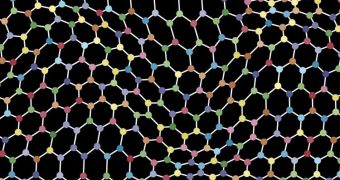The future of graphene in the electronics industry is assured, experts behind a new investigation on the material's properties explain. They say that they were able to make the extremely strong, unbelievably thin carbon compound magnetic.
This property was never observed in graphene before. In its natural state, it is only one atom thick, and features carbon atoms exclusively. These atoms are arranged in a hexagonal pattern, similar to how chicken wire looks.
Since it was discovered in 2004 – by a team of experts at the University of Manchester that also won the 2010 Nobel Prize in Physics for their findings – investigators have been constantly publishing papers on its properties. More than 3,000 journal entries have already been published on the material.
One of the most promising aspects of graphene is that it can replace silicon in all electronic devices. The band gap issue – graphene has no band gap in its natural state – was fixed last year, as were a host of other problems that may have prevented the material from reaching its full potential.
Now that scientists managed to make it magnetic, only a handful of minor obstacles remain to be overcome before the 2D, hexagonal carbon compound is employed at a large scale. The new research was carried out by one of the two experts who published the original paper on graphene.
Dutch-British-Russian physicist Sir Andre Konstantin Geim, FRS, holds an appointment as the director of the Manchester Center for Mesoscience and Nanotechnology at the University of Manchester, in the United Kingdom, and is also the Langworthy Professor at the university.
Together with Dr. Irina Grigorieva, a lecturer at the Manchester Condensed Matter Physics Group, Geim published the full details of how the material was made magnetic in a paper that appears in the latest issue of the top scientific journal Nature Physics.
The method the team employed for achieving its objective was very simple – they either removed certain atoms from the uniform carbon lattice, or they added nonmagnetic atoms, such as fluorine. The basic effect is “like minus multiplied by minus gives you plus,” Dr. Grigorieva explains, quoted by ScienceDaily.
One of the important aspects of turning graphene magnetic is that the defects the researchers willing to make in its lattice need to be located far away from each other (regardless of whether they are extra atoms or vacancies).
The challenge here is to make the material magnetic while also maintaining its amazing chemical and physical properties. At this point, graphene is the toughest material known to man, even though it's derived from graphite, the stuff inside pencils.

 14 DAY TRIAL //
14 DAY TRIAL //